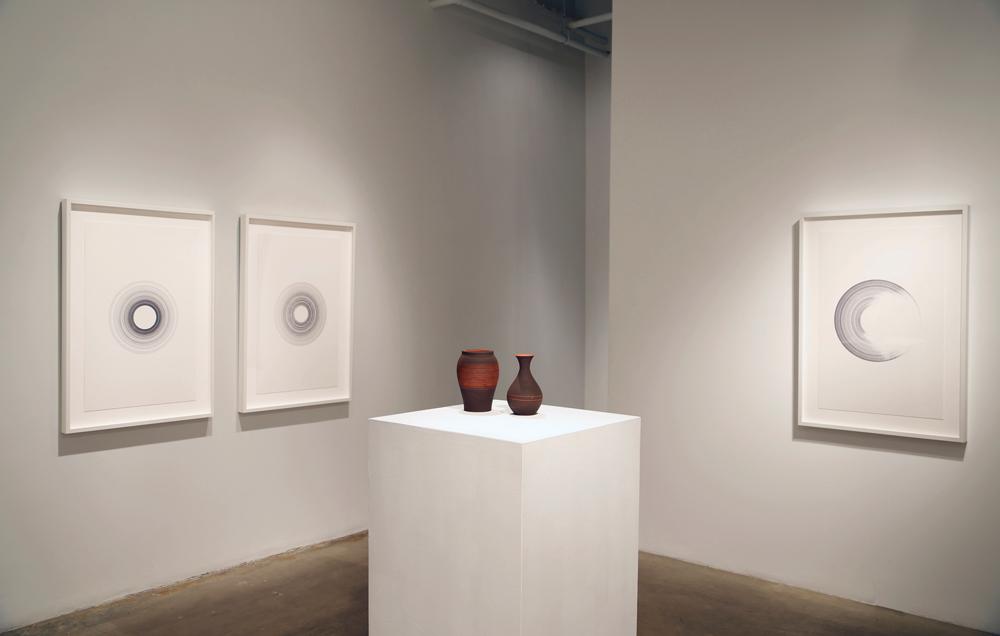The quiet elegance of Adrian Göllner’s solo exhibition at Patrick Mikhail Gallery belied the discursive nature of the works. They are great conversation pieces that gain much of their meaning from the stories of how they came to be. In this, they connect to Göllner’s previous work, such as the drawings he made using broken antique alarm clocks. He covered the clocks’ faces in paper, attached pencil leads to their minute hands and restarted the clocks. Each resulting small drawing of a circle was created literally from the physical energy of the last person to wind the clock (in some cases, 100 years ago).
In two new series, one of sparse circular drawings made with continuous concentric lines, the other of exquisite ceramic vases that are similarly encircled, Göllner continues his tragicomic quest to release the human (or animal) energies, sounds and emotions that he feels are stored in constructed objects, and to make these phenomena perceptible in new works of art. For the drawings, he created a rotating drawing table and connected a pen to the speaker of a vinyl turntable that played sad John Lennon songs, such as “I’m a Loser” and “Norwegian Wood”—the title of the exhibition. The lines in the drawings show the different intensities and vibrations of the music, and may or may not capture Lennon’s emotions on paper. A scientific judgment here seems as subjective as an aesthetic one.
The vases are not found artifacts, but are newly sculpted by ceramic artist Carolynne Pynn-Trudeau. Intrigued by the now-debunked theory that sounds are captured within ancient pottery, Göllner has half-seriously attempted to create “future artifacts.” Through a method similar to Thomas Edison’s wax-cylinder recording technique, sound was etched onto the leather-hard surfaces of the vases. The sound reproduction in clay is crude at best, but it is the story that counts. Göllner used a stylus apparatus and a homemade megaphone, and varied the sound scenario from vase to vase: one was engraved with the sound of his son reciting “Mary Had a Little Lamb,” another with the voice of a friend reciting a Hebrew wine blessing. And then there was the dog barking into the megaphone, recreating His Master’s Voice.
As humorous and pseudo-scientific as Göllner’s efforts are, they speak to a human desire to bring to life the human emotions and connections embedded in things from the past—a desire that is articulated, ironically, in exquisite objects that remain mute and enigmatic.
This is a review from the Fall 2013 issue of Canadian Art. To read more from this issue, visit its table of contents.

 Installation view of Adrian Göllner’s “Norwegian Wood” 2013
Installation view of Adrian Göllner’s “Norwegian Wood” 2013







